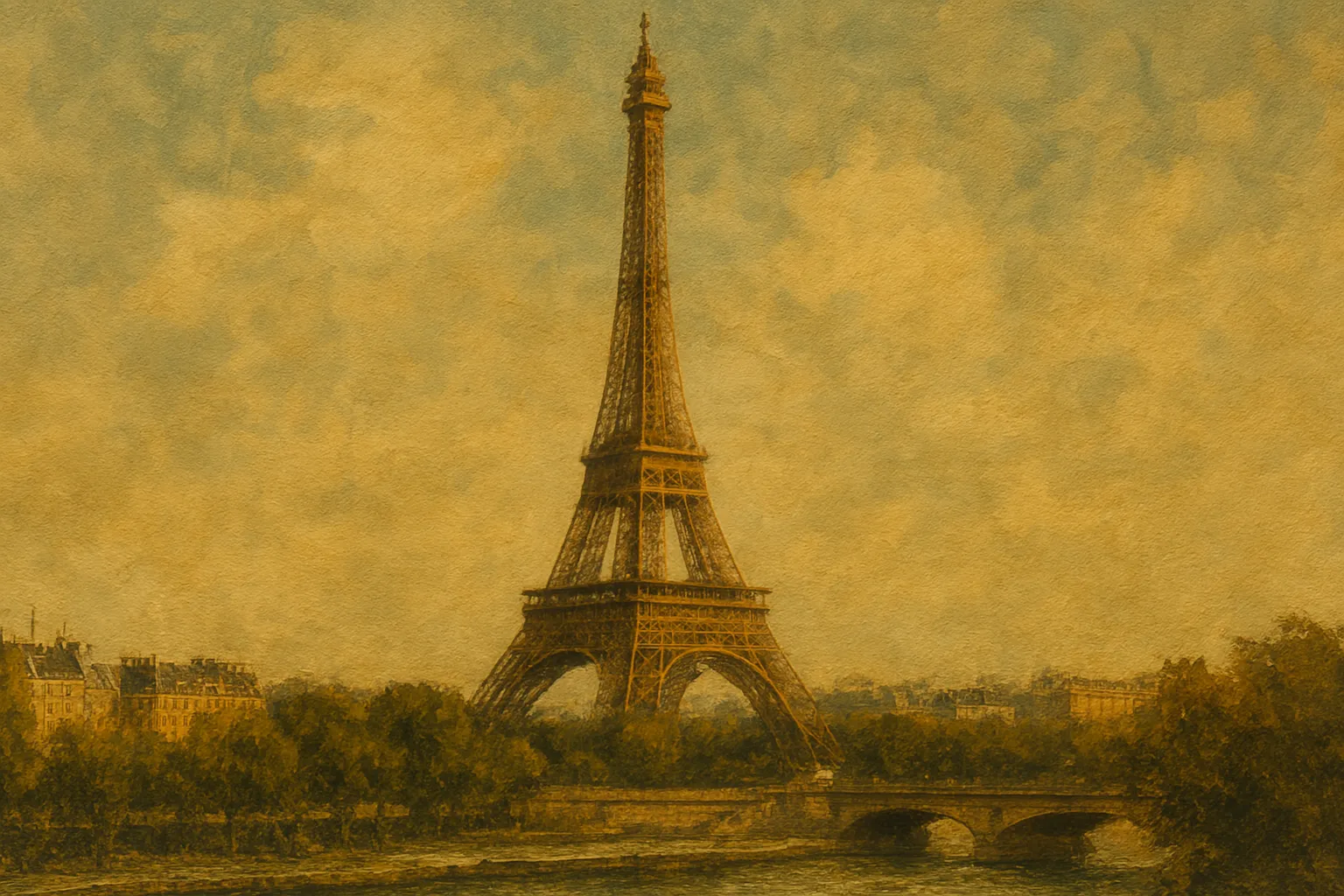UPSC
On This Day Today
Eiffel Tower Day: Celebrating an Engineering Icon
Last Updated
30th March, 2025
Date Published
30th March, 2025
Share This Post With Someone

Context:
Observed annually on March 31, Eiffel Tower Day marks the inauguration of the Eiffel Tower in 1889, a symbol of architectural brilliance and French heritage. Originally built for the 1889 World’s Fair, this monument’s history and significance offer valuable insights into innovation, cultural identity, and global recognition.
Key Points:
- Annual Celebration: Eiffel Tower Day is celebrated every year on March 31 to commemorate the tower’s grand opening in 1889, highlighting its enduring legacy.
- World’s Fair Origin: Constructed as the centerpiece for the 1889 World’s Fair in Paris, the tower celebrated the 100th anniversary of the French Revolution, showcasing France’s industrial progress.
- Design Competition: Over 100 artists submitted proposals in a design competition for the World’s Fair monument, with Gustave Eiffel’s 1,000-foot open-lattice iron tower selected in 1887.
- Construction Timeline: Work began on January 28, 1887, and was completed in just over two years, on March 31, 1889, despite initial skepticism and protests.
- Engineering Feat: Built in two years, two months, and five days, the tower’s rapid construction was a remarkable achievement for 19th-century engineering.
- Global Recognition: Since its unveiling, the Eiffel Tower has become one of the most iconic landmarks worldwide, symbolizing Paris and France.
- Three Levels: The tower features three floors—first floor (museums, glass floor, exhibitions, shops, dining), second floor (Jules Verne restaurant, shops, observation area), and summit (highest observation deck in Europe at 276 meters, with a champagne bar and Gustave Eiffel’s office replica).
- Cultural Transformation: Gustave Eiffel envisioned the tower as a tribute to the scientific advancements of the 18th century and the 1789 Revolution, turning Paris into a romantic icon.
- Visitor Statistics: As the world’s most visited paid landmark, it attracts an average of 25,000 visitors daily due to its architectural artistry.
- Design Credits: While named after Gustave Eiffel, the initial concept was by his company’s engineers, Maurice Koechlin and Emile Nouguier.
- Temporary Intent: Designed to last 20 years, the tower was meant to be dismantled post-World’s Fair but was retained for its utility.
- Physical Dynamics: The iron structure sways in storms, is wind-resistant, and expands by six inches in summer due to heat.
- Maintenance: Every seven years, 60 tonnes of paint are applied to prevent rust and maintain its appeal, earning it the nickname “La dame de fer” (Iron Lady).
- War-Time Survival: The tower narrowly escaped destruction during World War II, preserving its historical significance.
- Scientific Tribute: It honors 72 French scientists and engineers with their names engraved on its ironwork.
- Height and Symbolism: Standing at 1,063 feet, it overlooks Paris as a testament to Western culture and modern engineering prowess.
- Global Appeal: Eiffel Tower Day is a moment of joy for millions, celebrating one of the world’s most famous monuments.
Key Terms:
- Eiffel Tower Day: Annual celebration on March 31 marking the tower’s 1889 opening.
- World’s Fair: International exhibition in 1889 showcasing industrial and cultural achievements.
- Gustave Eiffel: Engineer whose company designed and built the Eiffel Tower.
- Open-Lattice: Framework design using interwoven iron strips for strength and lightness.
- French Revolution: 1789 uprising influencing the tower’s symbolic purpose.
- Observation Deck: Elevated platform offering panoramic views, highest at 276 meters.
- La dame de fer: French nickname for the Eiffel Tower, meaning “Iron Lady.”
- Wrought Iron: Durable iron alloy used in the tower’s construction.